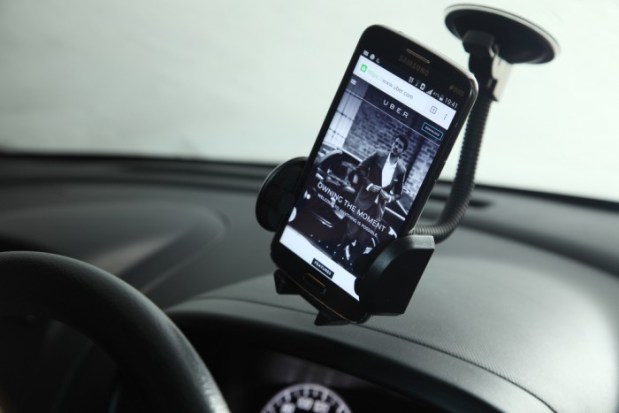Uber’s $100M Settlement Avoids Classifying Drivers As Employees

The larger Uber grows, the more it has to confront an essential problem brewing at the core of the sharing economy: are the drivers it employs full employees — and thereby entitled to all the protections and regulations that comes with the status — or can the company’s ride-hailing empire continue to grow around a model that rests on a definition of its workforce as something not so traditional?
Late Thursday (April 21), an answer came down that sits somewhere in between those two outcomes. Uber CEO Travis Kalanick announced that the company had settled two court cases filed in California (O’Connor v. Uber Technologies Inc.) and Massachusetts (Yucesoy v. Uber Technologies Inc.) that will see Uber pay up to $100 million in restitution to drivers in those states, but won’t require the company to recategorize and regulate its drivers as full-time employees. Those amorphously labeled drivers will also be able to use signs in their vehicles to ask passengers for tips, previously an inviolable restriction for workers under the service.
In addition to the monetary compensation, Shannon Liss-Riordan, the attorney who represented the drivers during the suits, explained that Uber also agreed to revamp its firing procedures, which previously allowed them to lock drivers out of the app without any warning or explanation. For the first time, Uber has published a written explanation of its driver deactivation policy, and The Wall Street Journal noted that outside cases of extreme misconduct, the company must provide drivers with warnings before removing them from accessing the service.
“We realize that some will be disappointed not to see this case go to trial,” Liss-Riordan said in a statement. “We believe the settlement we have been able to negotiate … provides significant benefits – both monetary and non-monetary – that will improve the work lives of the drivers and justifies this compromise result.”
Uber also agreed to help establish “a driver’s association” in California and Massachusetts, with funding coming from the company to sustain the group’s activities. Once a quarter, Kalanick said that Uber would meet with the association to “discuss the issues that matter most to drivers.”
But for all the concessions Uber agreed to, the biggest chip on the table – whether or not its drivers should be treated as fully tenured employees – fell the house’s way.
“Six years ago when Uber first started in San Francisco, it was easy to communicate with the handful of drivers using the app,” Kalanick wrote in a post to the company’s blog. “Austin Geidt, who ran marketing, called each one regularly to get their feedback and make sure things were working well. It was clear from those early conversations that drivers really valued the freedom Uber offered.”
While Uber and its drivers in Massachusetts and California may have come to an agreement, the settlement is still subject to approval from the presiding judge in the case, and there’s recent precedent to suggest that the concessions from the company may not be enough to close the case for good. In early April, a judge in the Golden State ruled that a $12.25 million settlement between Lyft and that service’s drivers was insufficient compensation for the latter group, even going so far as to remark that the deal “shortchanged” Lyft’s contract workers.
Given that Uber makes astronomically more money and by virtue of its size holds much more bargaining power of its drivers than Lyft, who knows if $100 million and a more transparent firing policy will be seen as fair play from a company that’s increasingly becoming a lynchpin of so many retailers’ innovative plans.
